Amino alcohol esters
| Home | | Medicinal Chemistry |Chapter: Medicinal Chemistry : Anticholinergic Drugs
Anticholinergic Drugs: Amino alcohol esters - Synthesis and Drug Profile - i. Cyclopentolate HCl(Cyclopent, Cyclate, Dilate) ii. Clidinium Bromide iii. Dicyclomine HCl (Bentyl, Mesbentyl) iv. Glycopyrrolate Bromide v. Propanthelin bromide (Probanthine, Spastheline) - Structure, Properties, uses, Synthesis, Assay, Storage, Dosage forms, Dose | Synthesis and Drug Profile
SYNTHESIS AND DRUG PROFILE
Amino alcohol esters
i. Cyclopentolate HCl(Cyclopent, Cyclate, Dilate)
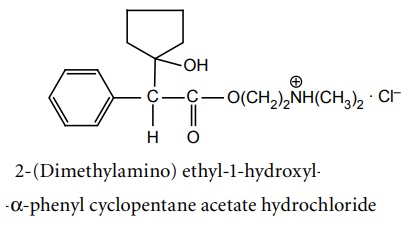
Synthesis
Route I. From: Sodium phenyl acetate
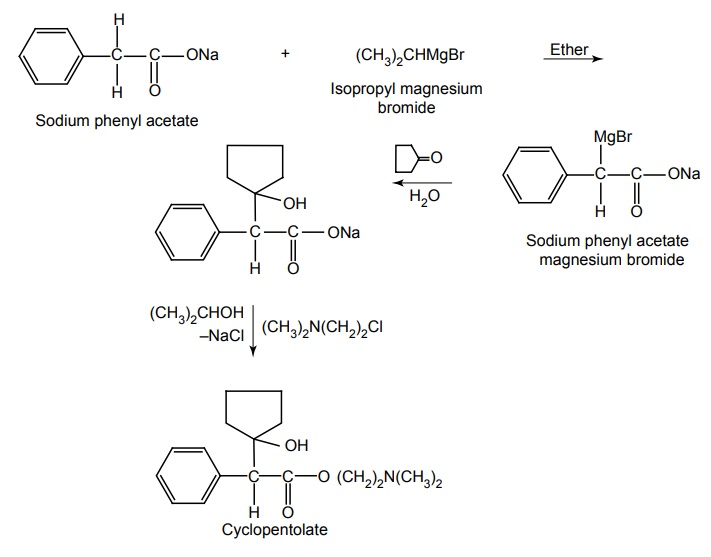
Route II. From: Phenyl acetate ion
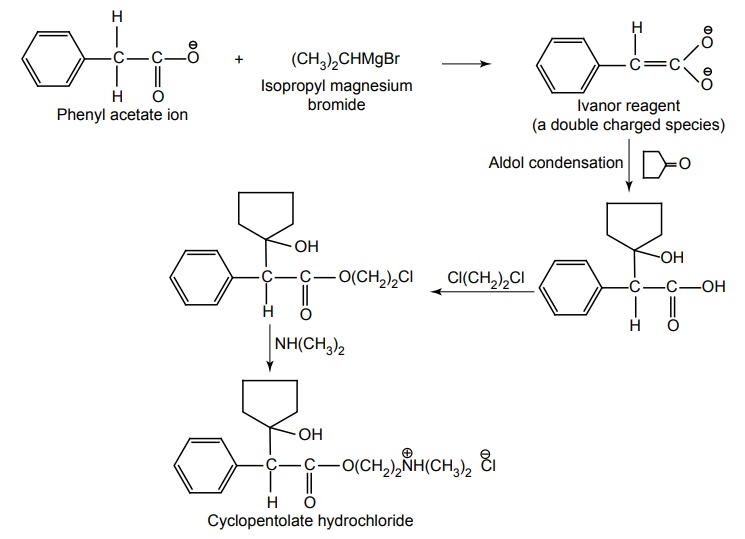
Properties and uses: It exists as white crystalline powder, soluble in water, methanol, and ethanol, but insoluble in toluene. Cyclopentolate is usually employed as eye drops to cause cycloplegia and mydriasis. It acts much faster than atropine and possesses a relatively shorter duration of action.
Assay: Dissolve the sample in a mixture of 0.1 M hydrochloric acid and alcohol. Titrate with 0.1 M sodium hydroxide and determine the end point potentiometrically.
Dose: Topically for adult, 1 drop of 1 or 2% solution to the conjunctiva; for refraction 1 drop of a 0.5% solution repeated after 5 to 15 min.
Dosage forms: Cyclopentolate eye drops B.P.
ii. Clidinium Bromide
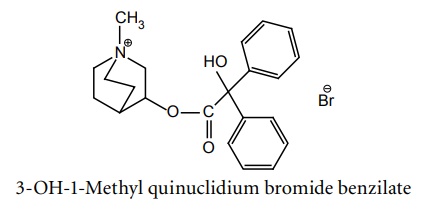
Synthesis
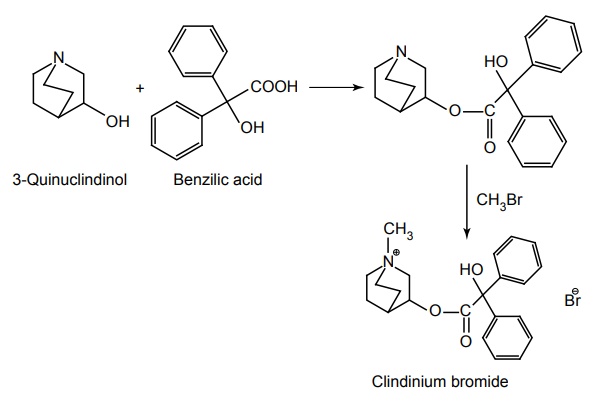
Uses: Used as a bronchodilator in asthmatic conditions. It has a longer lasting effect as compared to β-agonists.
iii. Dicyclomine HCl (Bentyl, Mesbentyl)

Synthesis
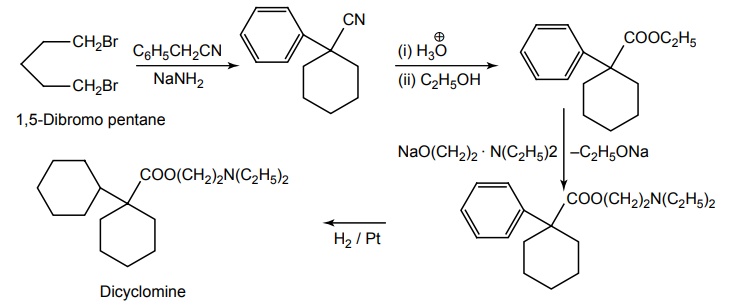
Properties and uses: It exists as a white, crystalline powder with a bitter taste, soluble in water and chloroform. Dicyclomine HCl behaves both as an antimuscarinic and a nonspecific antispasmodic agent. It was first introduced in 1950 and had minimized the adverse effects associated with the atropine type of compounds. Dicyclomine has spasmolytic effect on various smooth muscle spasms particularly those associated with the gastrointestinal (GI) tract. It is also used in dysmenorrhoea, pylorospasm, and biliary dysfunction.
Dose: By oral or I.M. 10 to 20 mg per day in four divided dose.
iv. Glycopyrrolate Bromide

Synthesis
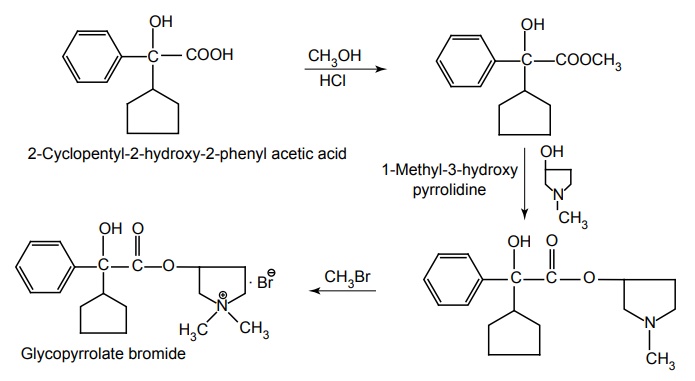
Properties and uses: It exists as a white, crystalline powder with a bitter taste, soluble in water and alcohol. It is used for suppressing gastric secretion and in the treatment of peptic ulcer and gastrointestinal disorder associated with spasm.
v. Propanthelin bromide (Probanthine, Spastheline)

Synthesis
Route I. From: Xanthene-9-carboxylate
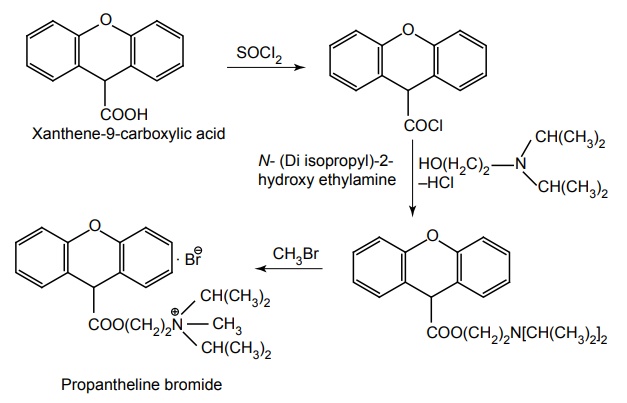
Route II. From: o-phenoxy benzoic acid
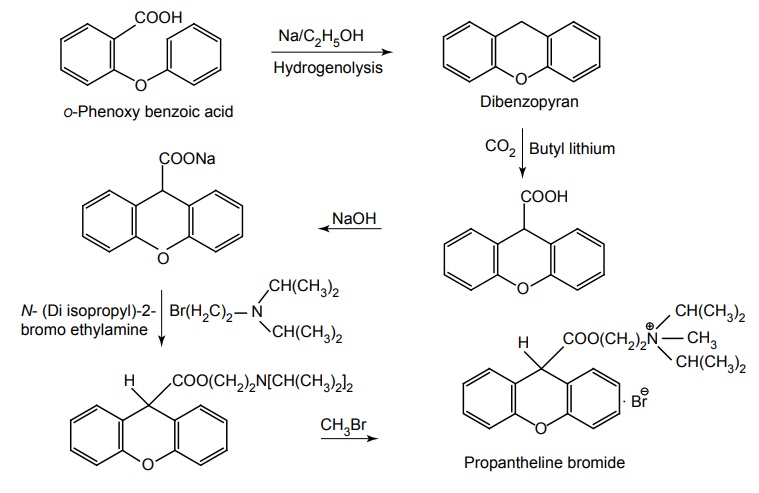
Properties and uses: It is a white or yellowish-white powder, slightly hygroscopic, soluble in water, in alcohol, and in methylene chloride. It is beneficial for the treatment of peptic ulcer, due to the decreased gastric motility by this drug, and it may relieve the pain in this condition.
Assay: Dissolve the sample in acetic anhydride. Titrate with 0.1 M perchloric acid and determine the end point potentiometrically.
Storage: It should be stored in well-closed airtight container, and protected from light. Dose: The usual initial dose is 15 mg thrice/day before meals; and 30 mg at bed time. Dosage forms: Propantheline bromide tablets I.P., Propantheline tablets B.P.
Related Topics
